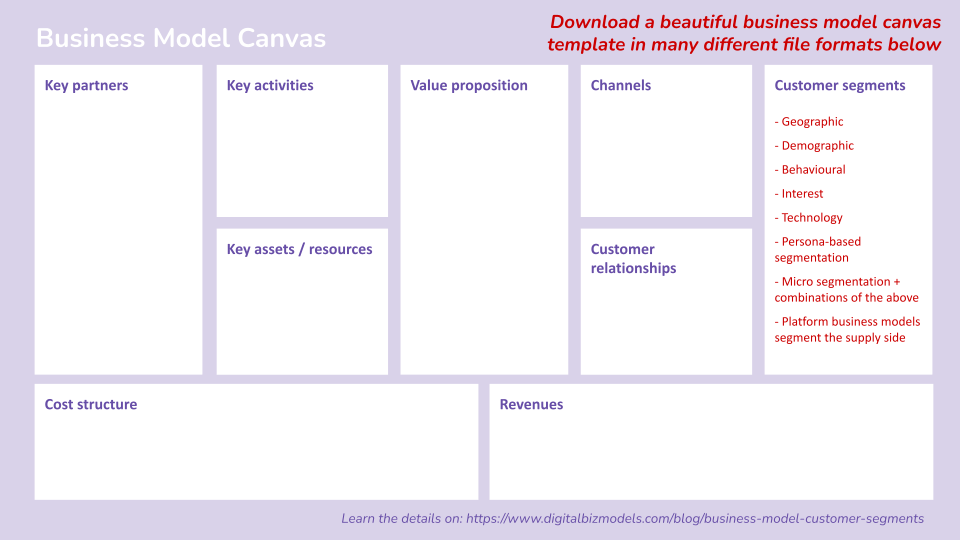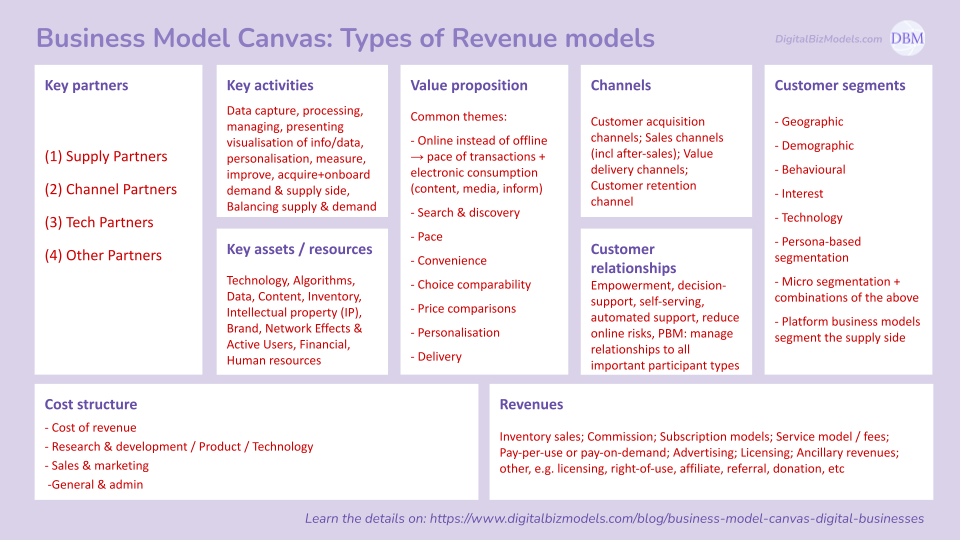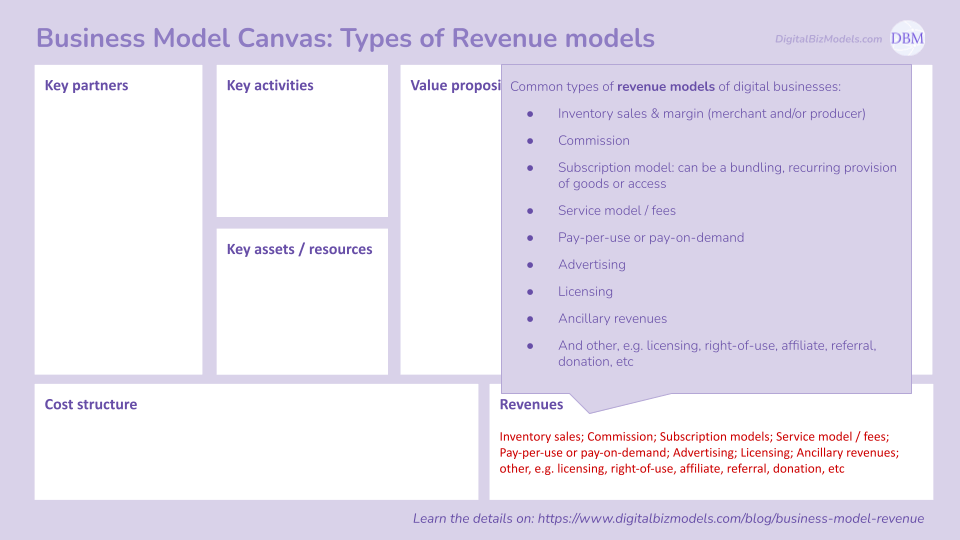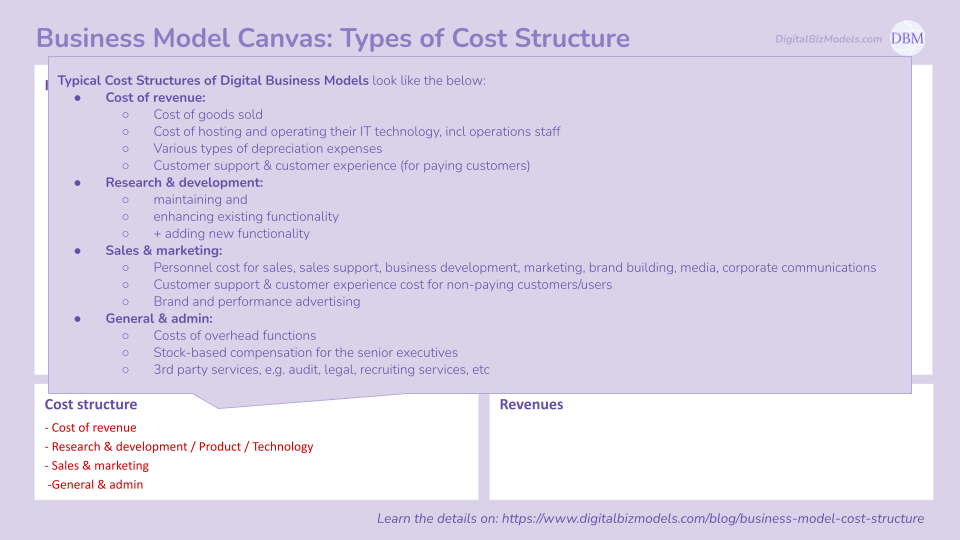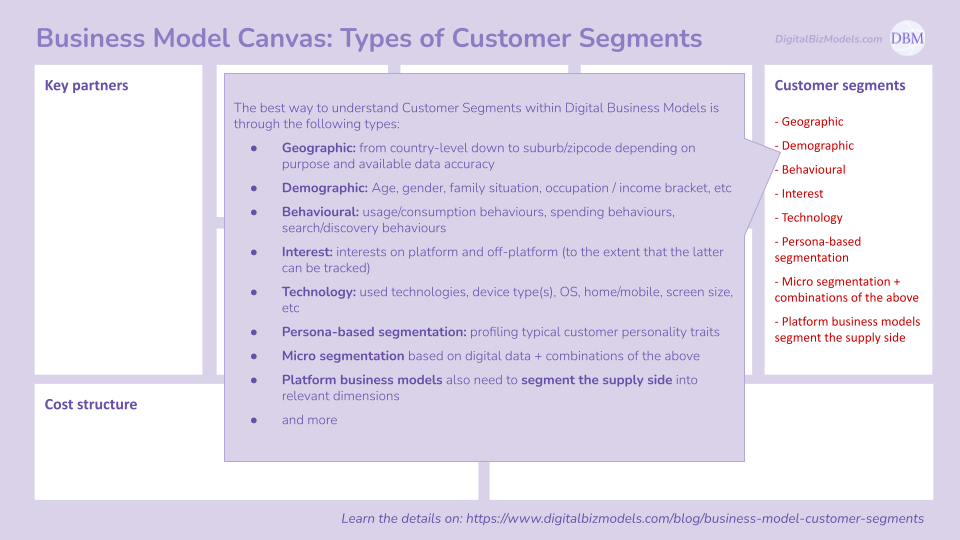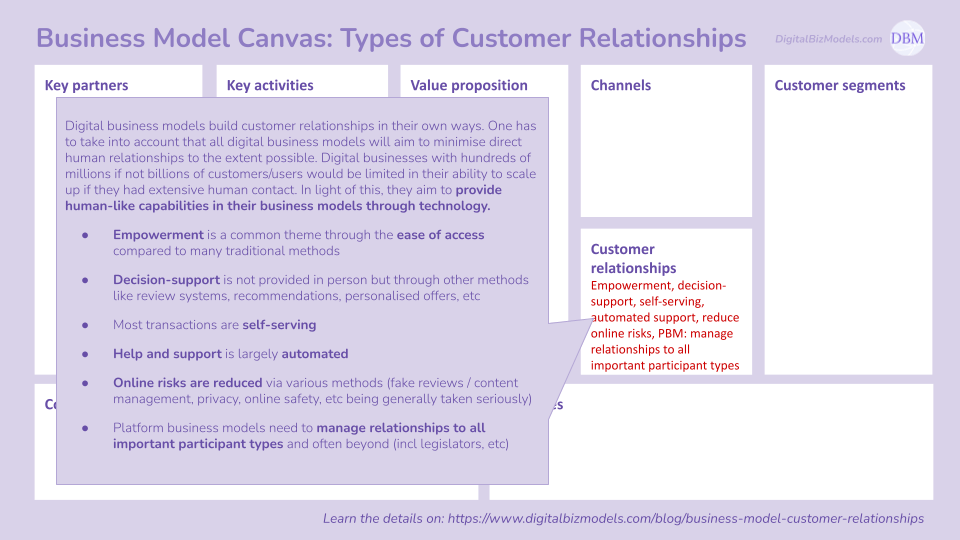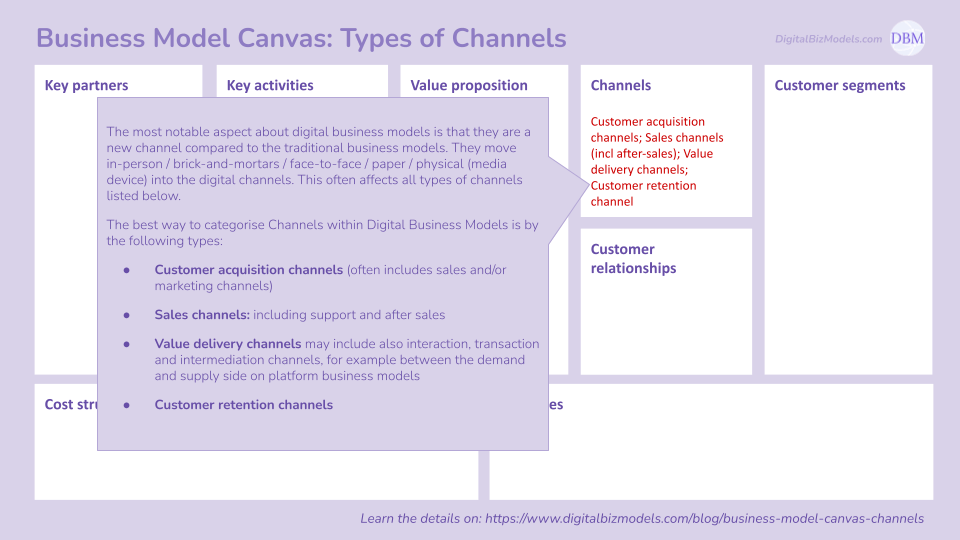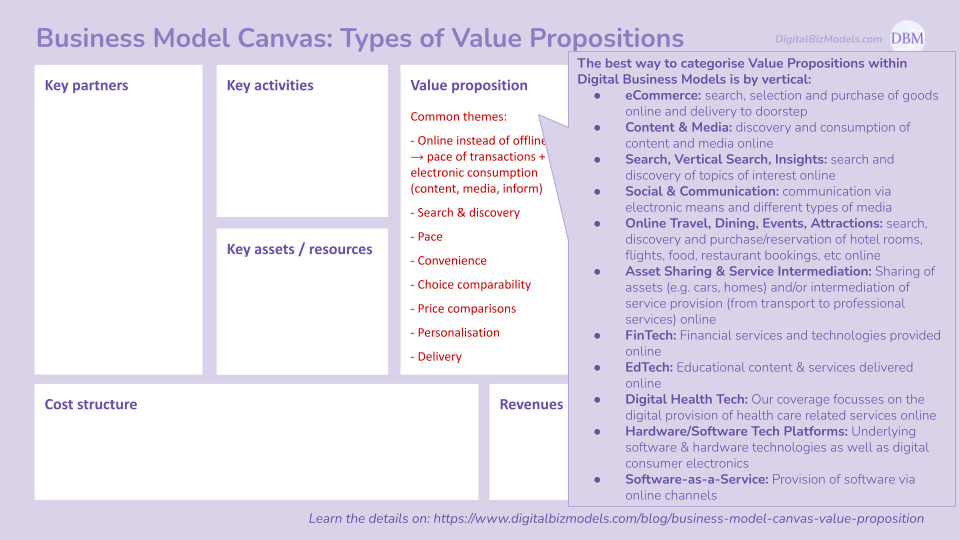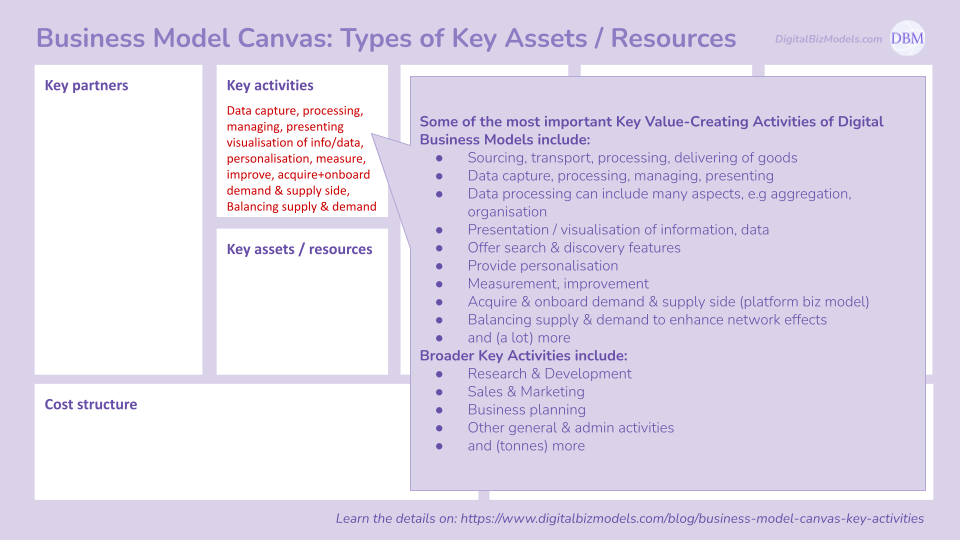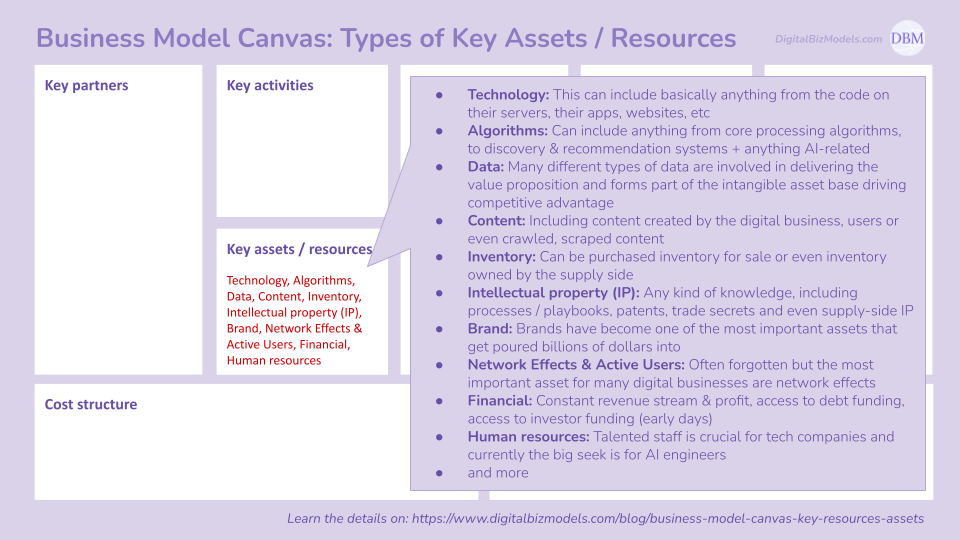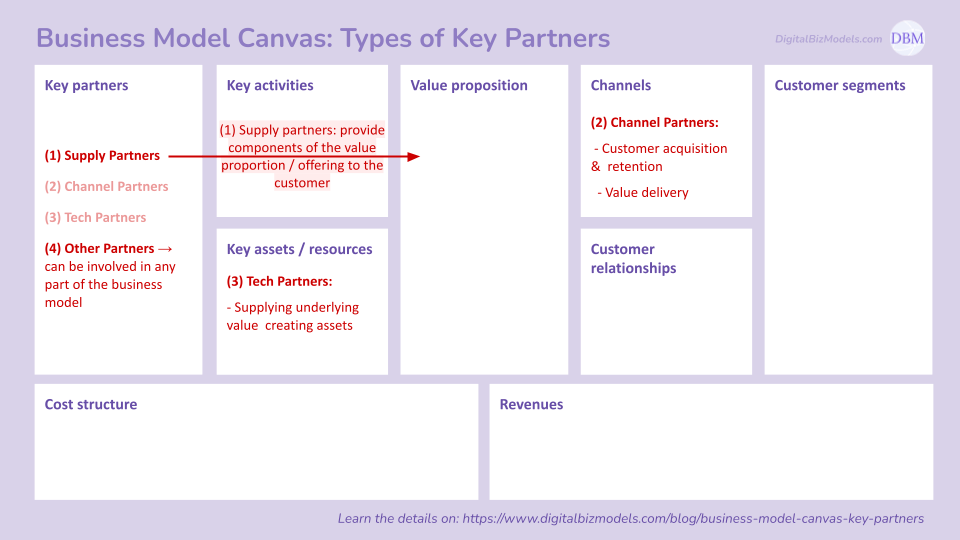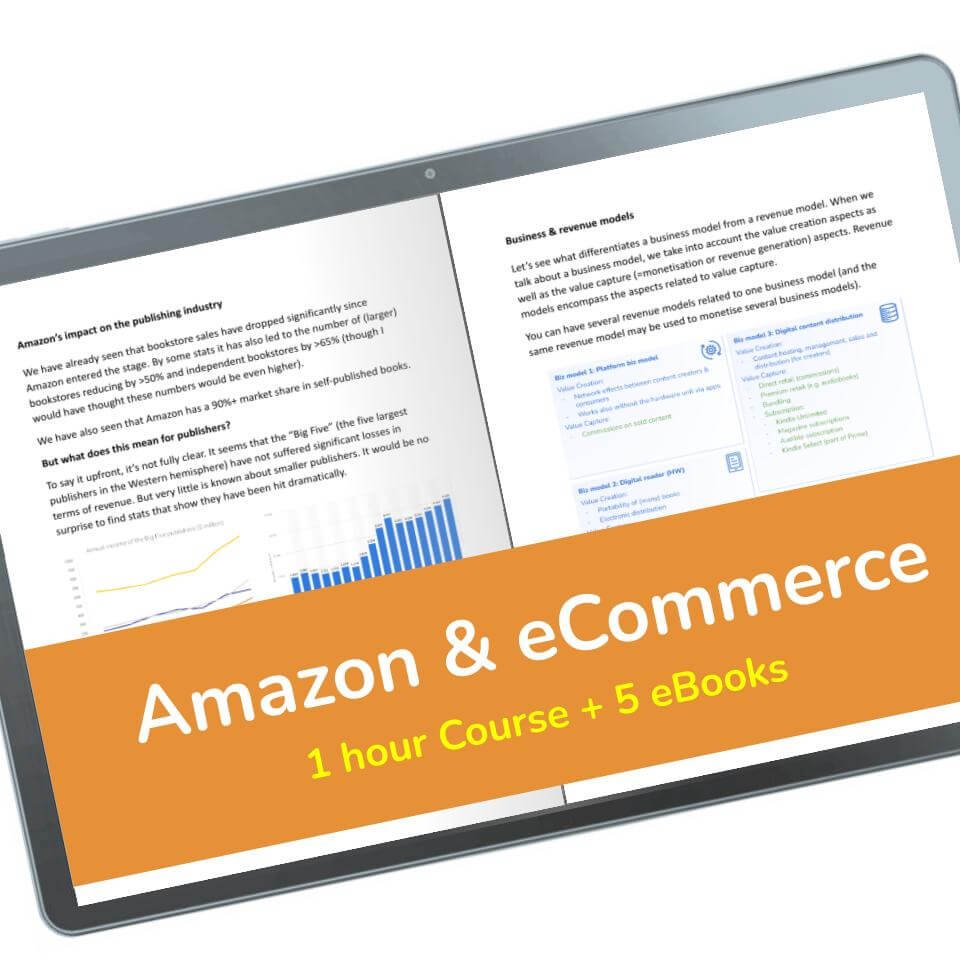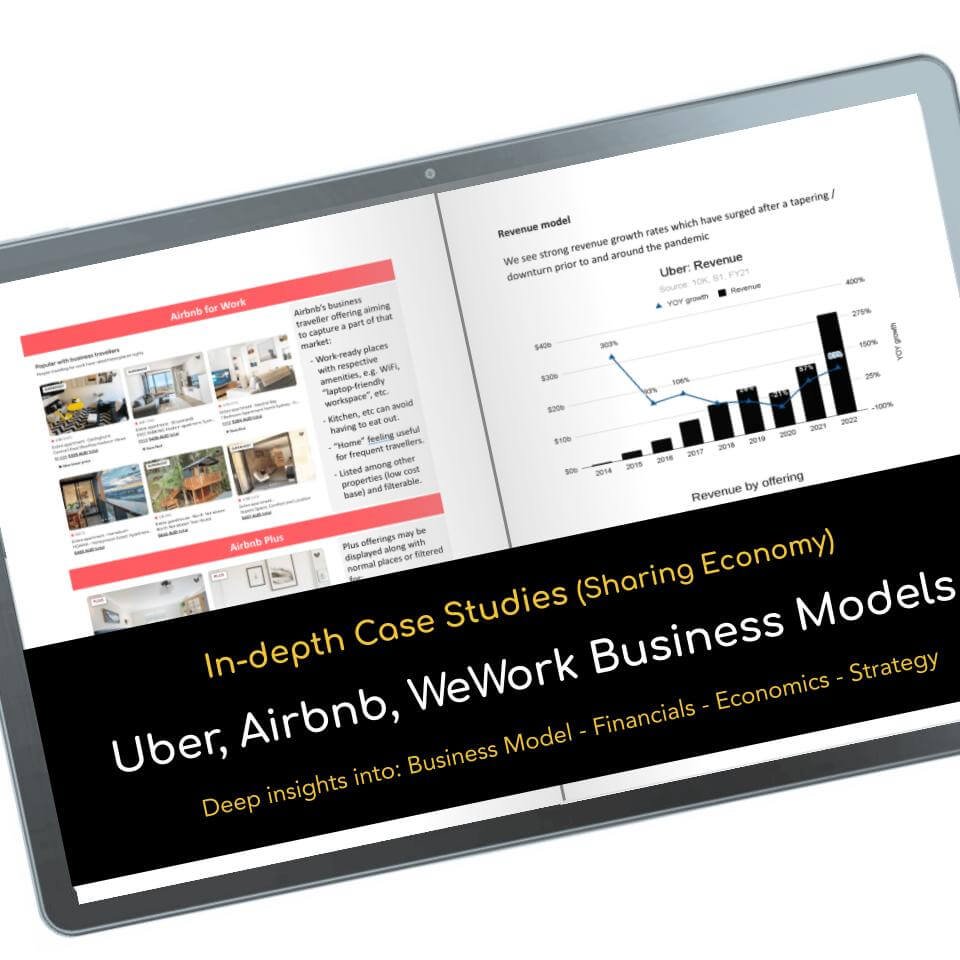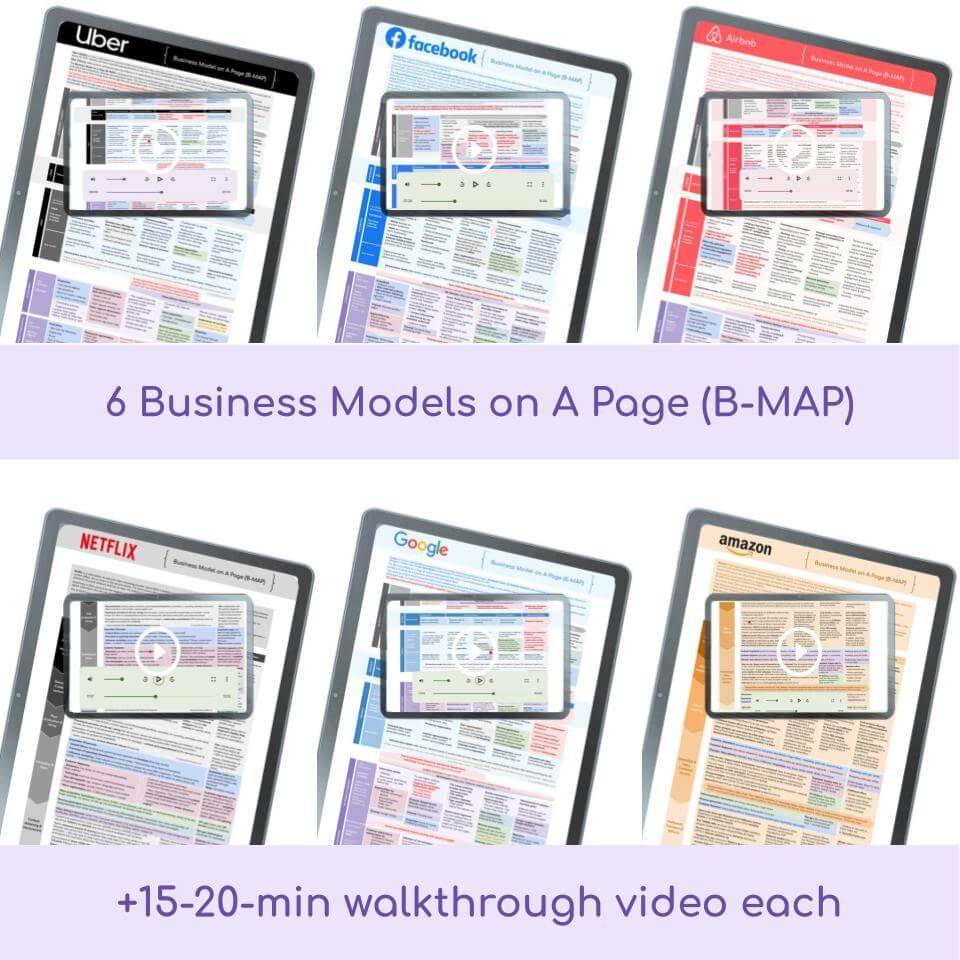Business Model Canvas - Customer Segments
This article will cover the various types & examples of Customer Segments tailored to digital business models.
Customer Segments is one of the sections of the popular Business Model Canvas tool.
The Business Model Canvas was devised by Alex Osterwalder
Typical types of Customer Segments within digital business models shown in the biz model canvas
(1) Types of Customer Segments
The best way to understand Customer Segments within Digital Business Models is through the following types:
Geographic: from country-level down to suburb/zipcode depending on purpose and available data accuracy
Demographic: Age, gender, family situation, occupation / income bracket, etc
Behavioural: usage/consumption behaviours, spending behaviours, search/discovery behaviours
Interest: interests on platform and off-platform (to the extent that the latter can be tracked)
Technology: used technologies, device type(s), OS, home/mobile, screen size, etc
Persona-based segmentation: profiling typical customer personality traits
Micro segmentation based on digital data + combinations of the above
Platform business models also need to segment the supply side into relevant dimensions
and more
(2) Examples of Customer Segments
Now let’s take a look at examples of Customer Segments. The best way to do so is - as always - by looking at concrete, vertical-specific examples.
eCommerce
Examples of digital businesses in the eCommerce vertical include Amazon, Etsy, Wayfair and thousands of others.
Customer Segments examples Amazon:
A big difference between traditional retail and eCommerce is the lack of staff to help with decision making, support, returns, etc. Amazon has some of the following in place instead
Geographic:
US: metropolitan, cities, rural
Other countries with developed transport infrastructures
Rest of world
Demographic:
Age, gender, family situation, occupation
Behavioural:
Product range
Convenience seeker
Price conscious
and more
Content & Media
Examples of digital businesses in the Content & Media vertical include Netflix, YouTube, Spotify, Medium, Apple News and many more:
Customer Segments examples Netflix:
User segmentation based on usage parameters:
Technology:
Device type TV, laptop, Tablet
Screen size
Connection type/speed
Viewing behaviours, e.g. home, on-the-go, weekend/weekday patterns, binge watcher, etc
Micro segmentation into 2,000 taste clusters determined by viewing history
and more
Sharing economy
Examples of digital businesses in the Asset & Service Sharing (=Sharing Economy) vertical include Uber, DoorDash, Airbnb among others:
Customer Segments examples Uber:
As a platform business model Airbnb has to make sure to segment both key participant types are covered in the “customer” sections segment: guests and hosts.
Potential ways to segment guests:
By geo-demographic
Behavioural
Trip type: Business travel; leisure travel; visiting friends/family; backpacking
Rental type: Shared space; private room; entire home/apartment
Accompanying guests: Number & type (spouse, kids, parents, etc)
Motivation-based: primary reasons for using Airbnb (more shortly)
Interest: Types of activities that travellers engage in (esp leisure), particularly interesting for Airbnb Experiences / Online Experiences
Potential ways to segment hosts:
Geo-demographic: see above
By rental type and type of accommodation provided:
Private room, entire place; room, unit/condo, house, unique stays
Tier: Plus, Luxe, for Work
By location type and characteristics: Urban, suburban, rural, exact location, proximity to amenities, etc
Online Travel
Examples of digital businesses in the Online Travel Agencies (OTA) vertical include Booking.com, TripAdvisor and Expedia:
Customer Segments examples Booking.com:
Let’s start with ways to segment hotels & accommodation providers:
Property types: hotel, resort, apartment, villa, hostel, motel
Room types offered
Star rating 1-5; user rating 1-10
Amenities, hotel facilities, room facilities
Proximity to sights (or remoteness)
Type of hotel: Independent, small chain, large chain,
There are many ways to segment travel customers:
Travel motivation: Leisure, business, group
Demographics: Age group, gender, marital status, kids, income bracket, lifestyle, etc
Booking details: length of stay, how many days prior booked, booking device, booking location, package/accommodation only
Social Media & Search
Examples of digital businesses in the Social Media vertical includes Meta’s Facebook, Instagram, X. Examples of Search Platforms include Google, Bing and others.
Customer Segments examples Google:
As a platform business model Google needs to segment each of the key participant types:
Search users:
Geographic, geo-demographic, interest
Behaviour, Technology: device type, by used browser, screen sizes, user behaviour, etc
Website owners:
By vertical
Keyword clusters: Which keyword clusters (and actual keywords therein) do the respective pages aim to serve
Type of page: commercial / non-commercials, education, news, blog, brand, creative / artist, etc
Advertisers:
Geography, industry and company size
Ad formats, campaign types, advertising tools used and other technical usage factors
Software-as-a-Service:
Examples of digital businesses in the Software-as-a-Service vertical include Salesforce, most Adobe products and hundreds of thousands more cloud-based software products:
Customer Segments examples productivity SaaS:
By the user vertical (for corporate customers): there will be big differences in how firms from different sectors use the same tool (e.g., a chip manufacturer will use a project management software very differently compared to a software development company, a marketing company or a bank).
Large vs small companies: there will be differences between large and small companies.
Within this there can also be different team sizes and this directly ties back to the pricing model of most SaaS solutions
Individuals & small teams
Critiquing the Biz Model Canvas (Customer Segments section)
Now that we have covered the Customer Segments section of the Business Model Canvas (BMC), it’s also time to discuss honestly some shortcomings of the BMC relating to this aspect.
“Mass market, Niche market, Segmented, Diversified, Multi-sided platform”: these are the only types of Customer Segments listed in the BMC. Of course, nothing wrong with it as such but also very high level and - frankly speaking - not much of a guide. But that’s understandable as the BMC is aiming to please all types of business models. With our focus on digital business models only, we have been able to provide a far more specific list of Customer Segments with many relevant examples that can be transferred to other digital business models.
Platform business models: while they do mention “Multi-sided platforms”, they dont realise that the supply side and for that matter all major participant types need to be segmented.
We hope you enjoyed our coverage of Customer Segments including the differentiation of different types and the extensive list of examples relevant for Digital Business Models.
What we like more than the Business Model Canvas: the B-MAP
We have used the business model canvas for almost 10 years on a very regular basis and to cover many dozen companies. Over time, we have realised that it has its limitations.
That is why we have decided to use a presentation format based on the time-tested Value Chain method devised by Strategy Professor Michael Porter. It is a far better way to grasp key aspects of a digital business model than the canvas.
Prof Porter is the most cited scholar on competitive strategy and digital transformation (with almost 10x more citations than the respectively 2nd ranking scholar).
Our Business Model on A Page (B-MAP) is specifically developed for digital business models and based on the Value Chain.
We have decided to price our B-MAPs super-affordably to give everyone (including our many valued followers from lower-income countries) the opportunity to get kick-started on their innovation journey with this high value resource that includes a B-MAP + walk through video for each of the digital companies that are covered!
